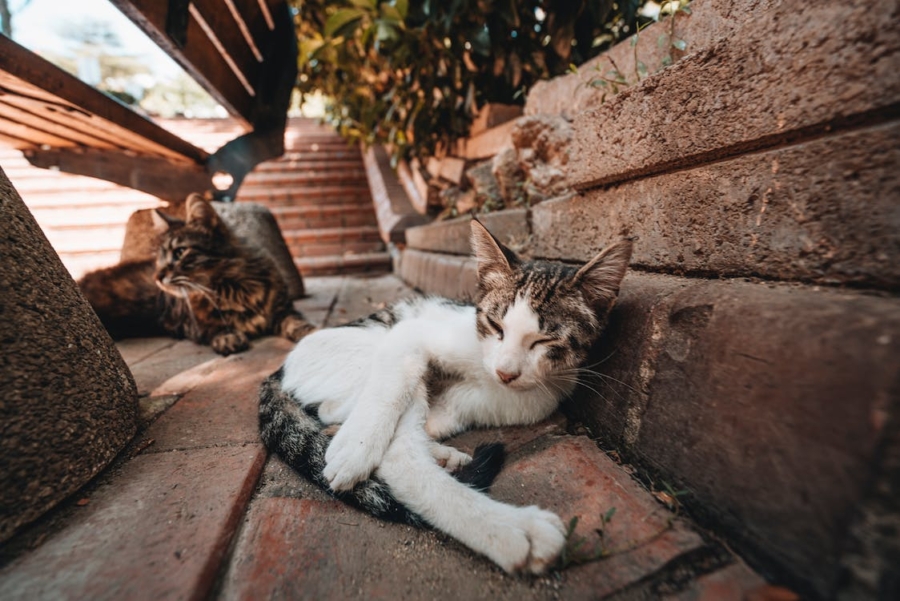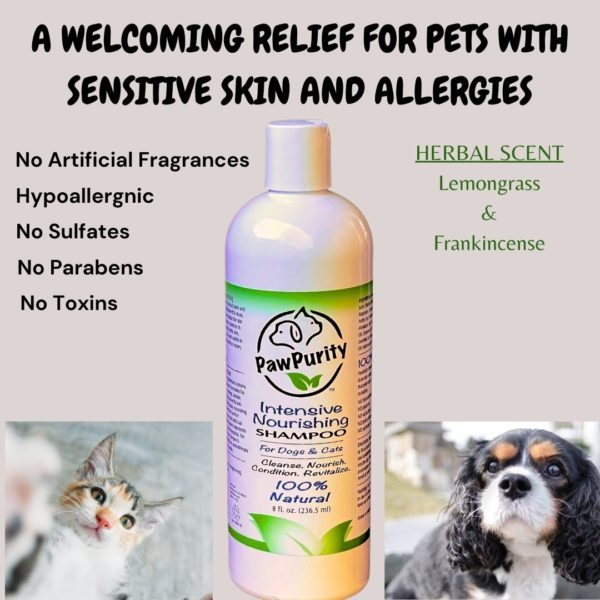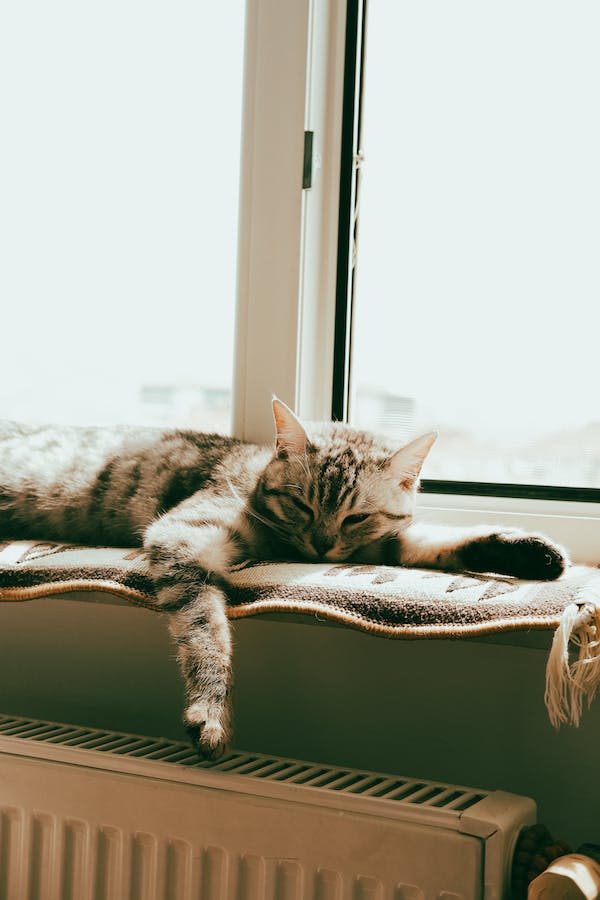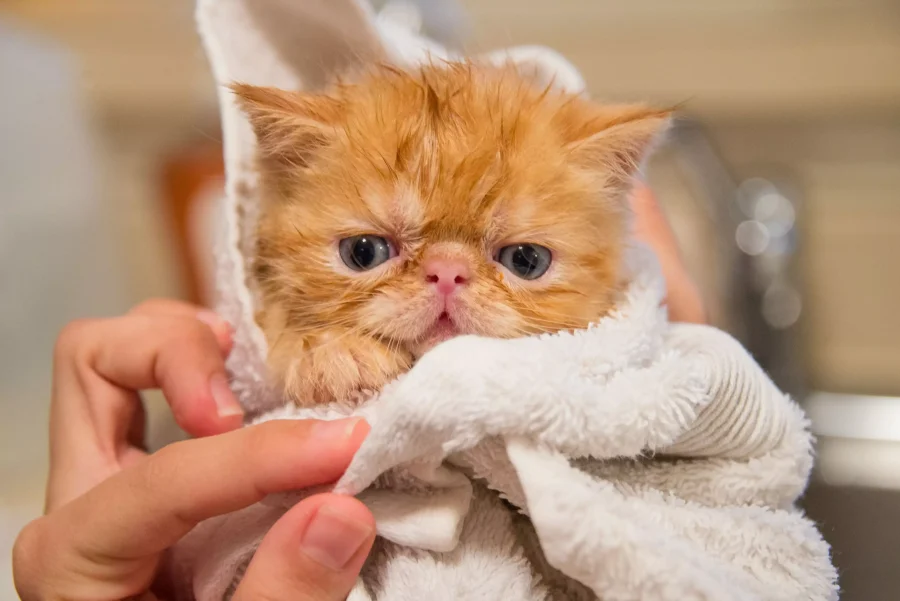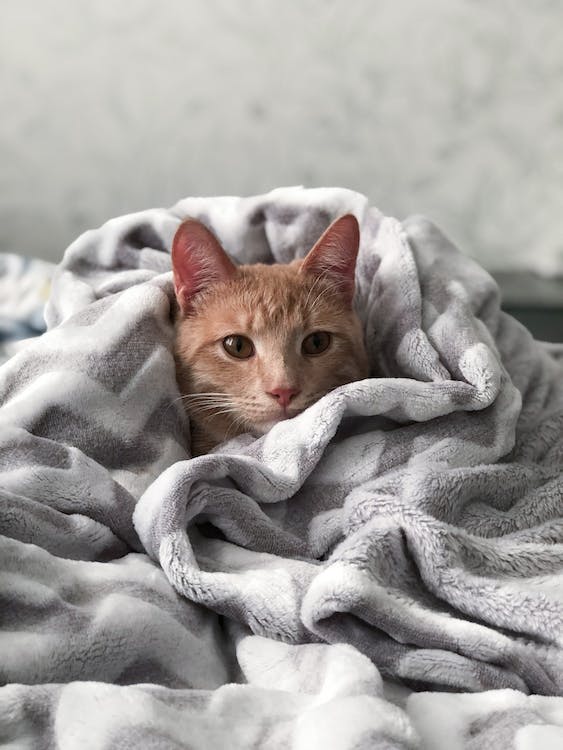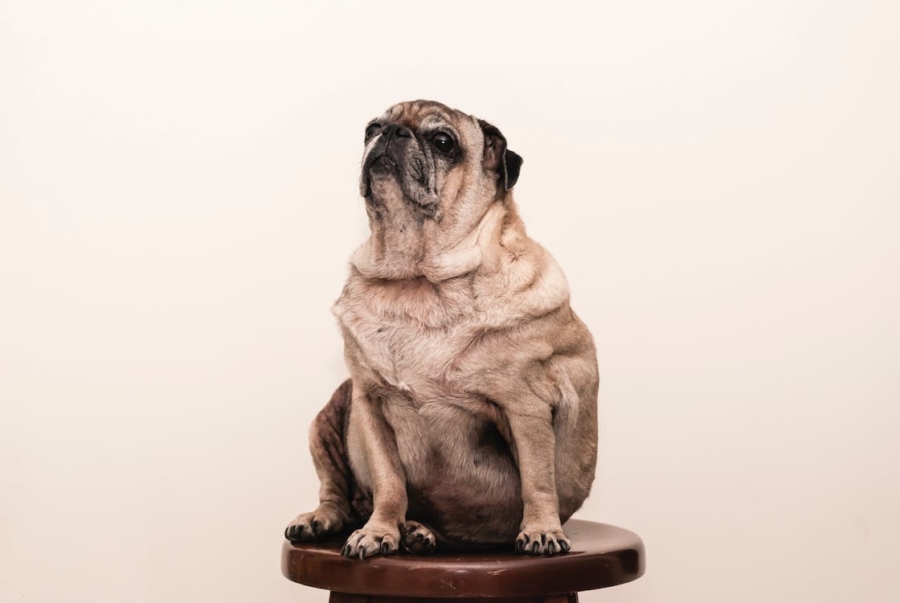Dander, a common skin condition characterized by flaky, dry skin, can affect not only humans but also our feline companions. Addressing and treating dander in cats is crucial for their overall health and well-being. This blog aims to provide a comprehensive understanding of dander in cats, its diagnosis, and its prevention, offering valuable insights for responsible cat owners.
Overview
Dander in cats, also known as seborrhea sicca, is a dermatological condition characterized by the presence of visible flaky skin on a cat’s fur and skin. It is caused by the abnormal shedding of dead skin cells from the outermost layer of the epidermis. The flakes are typically small, white, or grayish and can be observed on the cat’s coat or found on surfaces where the cat rests.
This condition is often associated with underlying factors such as low humidity levels, harsh weather conditions, poor nutrition, inadequate grooming practices, or certain medical conditions. When the natural shedding process of dead skin cells is disrupted, it leads to an accumulation of these cells, resulting in the formation of dander. Treating Dander is important to alleviate discomfort and prevent potential complications.
Physiology of a Cat’s Skin and Coat
To comprehend Dander in cats, it is essential to understand the unique physiology of their skin and coat. The physiology of a cat’s skin and coat plays a crucial role in the development of Dander. Cats possess a layer of dead skin cells on the outermost layer of the epidermis, known as the stratum corneum. This layer is responsible for protecting the underlying skin and maintaining its integrity. Disruptions in the normal shedding process can cause an imbalance, leading to the manifestation of Dander.
Dander in cats should be distinguished from other skin conditions such as fungal or bacterial infections, allergies, or parasitic infestations. Accurate diagnosis is important to ensure appropriate treatment and management. Visual examination of the cat’s skin and coat, along with a thorough evaluation of other symptoms and potential underlying health issues, can aid in the diagnosis of dander.
Addressing dander in cats is essential to alleviate discomfort and prevent potential complications. Treatment strategies may involve improving the cat’s diet and nutrition by incorporating essential nutrients for a healthy coat, practicing regular grooming techniques such as brushing and proper bathing procedures, using specialized shampoos and treatments designed to combat dandruff, or implementing medical interventions under veterinary guidance.
Common Factors Contributing to Dander
- Dry skin: Cats with dry skin are more prone to Dander.
- Poor grooming habits: Cats that don’t groom themselves properly or have difficulty reaching certain areas of their body may develop dander.
- Allergies: Allergies to certain foods or environmental factors can cause dander in cats.
- Parasites: External parasites like fleas or mites can irritate the skin, leading to dander.
- Underlying medical conditions: Certain medical conditions, such as fungal infections, bacterial infections, or hormonal imbalances, can contribute to dander in cats.
- Diet: Poor nutrition or a diet lacking essential fatty acids can lead to dry skin and dander in cats.
- Environmental factors: Dry or cold environments can exacerbate dander in cats.
- Stress: Cats that are stressed or anxious may develop dander as a result of changes in their grooming habits or skin health.
- Overbathing: Frequent bathing with harsh shampoos can strip the natural oils from a cat’s skin, causing dryness and dander.
- Age: Older cats may experience dander more frequently due to decreased oil production and changes in their skin’s elasticity.
Differentiating Between Dander and Other Skin Conditions
Differentiating between dander and other skin conditions in cats can be challenging, but there are certain characteristics and signs that can help distinguish them. Here are some key points to consider:
Dander:
- Flaky, white, or grayish flakes that resemble dry skin.
- Flakes are typically small and easily detachable from the cat’s fur.
- The skin beneath the flakes may appear dry or slightly red.
- Dander is commonly found along the back, tail, and neck areas of the cat.
- It is not typically accompanied by other symptoms like excessive scratching or redness.
Other Skin Conditions:
- Fungal or Yeast Infections: These may appear as circular patches of red, inflamed skin with scaly or crusty lesions. It can be accompanied by itching, hair loss, and an unpleasant odor.
- Flea Allergy Dermatitis: Cats with flea allergies may develop small, red, itchy bumps, especially around the base of the tail and along the back. Fleas or flea dirt may be visible on the fur.
- Allergic Dermatitis: Cats with allergies may have red, inflamed, or itchy skin, often accompanied by hair loss, sores, or scabs. The condition may be seasonal or triggered by specific allergens.
- Bacterial Infections: Bacterial infections can cause redness, swelling, pus-filled lesions, and a foul odor. It may be accompanied by itching, discomfort, and pain.
- Mange: Caused by mites, mange can result in intense itching, hair loss, crusted or scaly skin, and sores. It commonly affects the ears, face, and neck.
If you are unsure about the cause of your cat’s skin condition or if it persists or worsens, it is recommended to consult a veterinarian. They can perform a thorough examination and diagnostic tests and provide appropriate treatment based on the specific condition.
Diagnosing Dander in Cats
Diagnosing dander in cats typically involves a combination of visual examination, identification of potential underlying health issues, and seeking professional veterinary advice. Here’s a breakdown of the process:
Visual Examination of the Cat’s Skin and Coat:
- Check for flaky, white, or grayish flakes on the cat’s fur, particularly along the back, tail, and neck areas.
- Observe the condition of the skin beneath the flakes—look for dryness, redness, or signs of irritation.
- Assess the overall appearance and texture of the cat’s coat—look for dullness, excessive dryness, or a lack of luster.
Identifying Potential Underlying Health Issues:
- Review the cat’s medical history for any pre-existing conditions or known allergies.
- Consider any recent changes in the cat’s environment, diet, or grooming routine that could contribute to dry skin.
- Take note of any additional symptoms present, such as excessive scratching, hair loss, redness, or sores.
Seeking Professional Veterinary Advice:
- If you suspect dander or if the condition persists, it is recommended to consult a veterinarian.
- The veterinarian will conduct a thorough examination of the cat’s skin, coat, and overall health.
- They may ask you questions about the cat’s diet, grooming routine, and living environment.
- Diagnostic tests, such as skin scrapings, may be performed to rule out other skin conditions or underlying causes.
- The veterinarian will provide a proper diagnosis and recommend appropriate treatment options, which may include changes in diet, grooming practices, or the use of specific medications or topical treatments.
Remember, a professional veterinary diagnosis is crucial for accurately identifying and treating dander or any underlying health issues in cats.
Treating Dander in Cats
Improving Diet and Nutrition
Optimizing a cat’s diet and nutrition is crucial in managing dander. Essential nutrients such as omega-3 and omega-6 fatty acids, vitamins A and E, and zinc promote a healthy coat and skin. Choosing high-quality cat food that includes these nutrients is recommended for preventing and managing dander.
Regular Grooming Practices
Implementing regular grooming practices is essential in managing dander. Brushing and combing techniques help remove dead skin cells and distribute natural oils, promoting a healthier coat. Proper bathing procedures using cat-friendly shampoos can also help alleviate dander.
Using Specialized Shampoos and Treatments
Utilizing specialized shampoos and treatments designed to combat dander can be beneficial. Look for shampoos containing ingredients like salicylic acid, sulfur, or coal tar, known for their anti-dander properties. Additionally, natural remedies such as aloe vera or coconut oil can help soothe the skin. It is advisable to consult a veterinarian before using any home remedies.
Medical Interventions
In severe cases, medical interventions may be necessary. Prescription medications, such as corticosteroids or antifungal agents, can be used to address underlying causes and reduce inflammation. Topical treatments and ointments may also be prescribed to alleviate dander symptoms.
Prevention and Maintenance
Creating a Suitable Environment for Your Cat
Maintaining a suitable environment for your cat is crucial in preventing dander. Ensure proper humidity levels in the living space, provide a balanced and nutritious diet, and offer ample opportunities for exercise and mental stimulation.
Regular Veterinary Check-ups and Preventive Care
Regular veterinary check-ups and preventive care are essential in managing dander and promoting overall health. Routine examinations allow for early detection of any underlying health issues that may contribute to dander.
Managing Stress and Anxiety in Cats
Stress and anxiety can exacerbate dander in cats. Provide a stress-free environment, enrich their surroundings with toys and scratching posts, and consider using pheromone diffusers or supplements to help reduce stress levels.
Wrap Up
Dandruff in cats should not be overlooked, as it can impact their well-being and quality of life. Understanding the causes, diagnosis, and prevention methods is vital for responsible cat ownership. By implementing appropriate measures, including maintaining a healthy diet, practicing regular grooming, using specialized shampoos, and seeking professional veterinary care, cat owners can ensure the comfort and health of their feline companions.
#DanderInCats #DandruffOnCats #CatWithDander #cats #cathealth #catshampoo #shampooforcats #catdander
Cat Knowledge!
Cat Health & Care
Don’t Put These Essential Oils Near Your Cats!
by Lisa Porter
on May 01 2023
It’s important to be aware of the potential risks when using essential oils around your cats. Essential oils can be beneficial for humans, but they can also be dangerous and even toxic for cats. That’s why it’s essential to know which essential oils are toxic for cats, so you can keep them safe from accidental poisoning. In this blog post, we’ll discuss the toxic essential oils for cats and how to keep them away from your furry friends.
Skin, Coat & Paw Care
How to Choose a Cat Shampoo
by Lisa Porter
on Oct 14 2022
Select a cat shampoo based on your cat’s skin condition. Discover which one to choose.
Flea & Tick Protection
Skin Mite Dermatitis in Cats – Causes, Symptoms & Treatments
by Lisa Porter
on Mar 26 2023
Skin mite dermatitis in cats is a common condition that can be caused by skin mite bites. Skin mite dermatitis in cats, also known as scabies, is caused by an infestation of microscopic parasites called skin mites. It is characterized by intense itching, hair loss, and red, scaly skin. If left untreated, skin mite dermatitis can cause significant discomfort for cats and even lead to secondary infections. In this blog post, we’ll discuss the causes, symptoms, and treatment of skin mite dermatitis in cats and some preventative measures to help keep your cat safe from skin mites.





